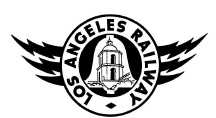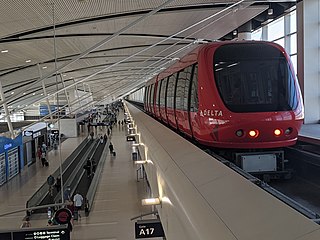
Streetcars have been an integral part of the public transportation network of New Orleans since the first half of the 19th century. The longest of the city's streetcar lines, the St. Charles Avenue line, is the oldest continuously operating street railway system in the world. Today, the streetcars are operated by the New Orleans Regional Transit Authority (RTA).

The Presidents' Conference Committee (PCC) is a streetcar design that was first built in the United States in the 1930s. The design proved successful domestically, and after World War II it was licensed for use elsewhere in the world where PCC based cars were made. The PCC car has proved to be a long-lasting icon of streetcar design, and many remain in service around the world.

Brookville Equipment Corporation, based in Brookville, Pennsylvania, United States, manufactures railroad locomotives for industrial and light capacity switching needs. The company also builds and restores streetcars. The company used to be known as Brookville Locomotive Company.
The St. Louis Car Company was a major United States manufacturer of railroad passenger cars, streetcars, interurbans, trolleybuses and locomotives. It operated from 1887 to 1974 and was based in St. Louis, Missouri.

The San Diego Electric Railway (SDERy) was a mass transit system in San Diego County, California, United States. The system utilized 600 volt direct current streetcars and buses.

Streetcars in Washington, D.C. transported people across the city and region from 1862 until 1962.

The Presidents' Conference Committee Car was a streetcar used by the Toronto Transportation Commission and the Toronto Transit Commission. The PCC streetcar was designed by the Presidents' Conference Committee, a group of transit operators in the United States and Canada.

The Los Angeles Railway was a system of streetcars that operated in Central Los Angeles and surrounding neighborhoods between 1895 and 1963. The system provided frequent local services which complemented the Pacific Electric "Red Car" system's largely commuter-based interurban routes. The company carried many more passengers than the Red Cars, which served a larger and sparser area of Los Angeles.

The Chicago Surface Lines (CSL) was operator of the street railway system of Chicago, Illinois, from 1913 to 1947. The firm is a predecessor of today's publicly owned operator, the Chicago Transit Authority.

Streetcars were part of the public transit service in Kenosha, Wisconsin, in the first third of the 20th century, and returned to this role in the year 2000.

Pittsburgh Railways was one of the predecessors of Pittsburgh Regional Transit. It had 666 PCC cars, the third largest fleet in North America. It had 68 streetcar routes, of which only three are used by the Port Authority as light rail routes. With the Port Authority's Transit Development Plan, many route names will be changed to its original, such as the 41D Brookline becoming the 39 Brookline. Many of the streetcar routes have been remembered in the route names of many Port Authority buses.

Cincinnati Street Railway (CSR) was the public transit operator in Cincinnati, Ohio, from 1859 to 1952. The company ceased streetcar operations and was renamed Cincinnati Transit Company.

The Louisville Railway Company (LRC) was a streetcar and interurban rail operator in Louisville, Kentucky. It began under the name Louisville City Railway in 1859 as a horsecar operator and slowly acquired other rival companies. It was renamed in 1880 following the merger of all Mule operations as the Louisville Railway Company. All tracks were 5 ft gauge.

The Pittsburgh Light Rail is a 26.2-mile (42.2 km) light rail system in Pittsburgh, Pennsylvania, and surrounding suburbs. It operates as a deep-level subway in Downtown Pittsburgh, but runs mostly at-grade in the suburbs south of the city. The system is largely linear in a north-south direction, with one terminus near Pittsburgh's central business district and two termini in the South Hills. The system is owned and operated by Pittsburgh Regional Transit.

The Phoenix Street Railway provided streetcar service in Phoenix, Arizona, United States, from 1888 to 1948. The motto was "Ride a Mile and Smile the While."

The Third Avenue Railway System (TARS), founded 1852, was a streetcar system serving the New York City boroughs of Manhattan and the Bronx along with lower Westchester County. For a brief period of time, TARS also operated the Steinway Lines in Long Island City.

Streetcars in St. Louis, Missouri, operated as part of the transportation network of St. Louis from the middle of the 19th century through the early 1960s.

Transportation in metropolitan Detroit comprises an expansive system of roadways, multiple public transit systems, a major international airport, freight railroads, and ports. Located on the Detroit River along the Great Lakes Waterway, Detroit is a significant city in international trade, with two land crossings to Canada. Three primary Interstate highways serve the region.

P was a streetcar line in Los Angeles, California, United States. It was operated by the Los Angeles Railway from 1895 to 1958, and by the Los Angeles Metropolitan Transit Authority from 1958 to 1963.

The Charlottesville and Albemarle Railway (C&A) was a short electric street railroad operating within the city of Charlottesville, Virginia, United States, during the early 20th century. The line was preceded by several streetcar lines operating both horse-drawn and electric powered cars dating back to 1887. After facing financial difficulties, the predecessor lines were reorganized into the C&A in 1903. The C&A's electric streetcars operated off of an overhead line system that was powered by the railroad's own power plant. The C&A also offered electric power generated by its plant to the city of Charlottesville. During the mid-1910s, the line received numerous upgrades, including the construction of a new power plant on the Rivanna River, a new company headquarters building, expansion of track, and the purchase of new streetcars.



















